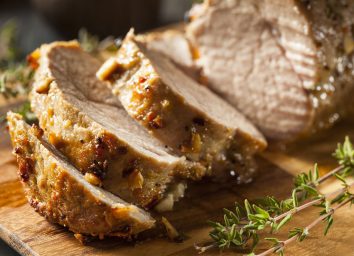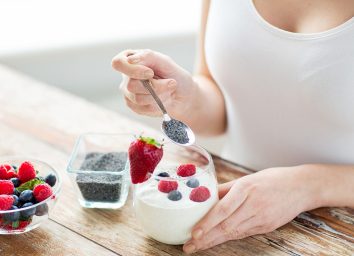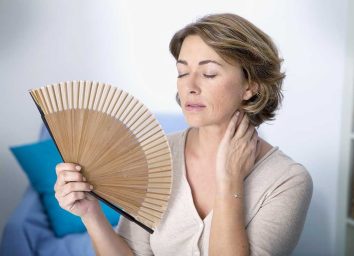The 20 Best Natural Cures for Women
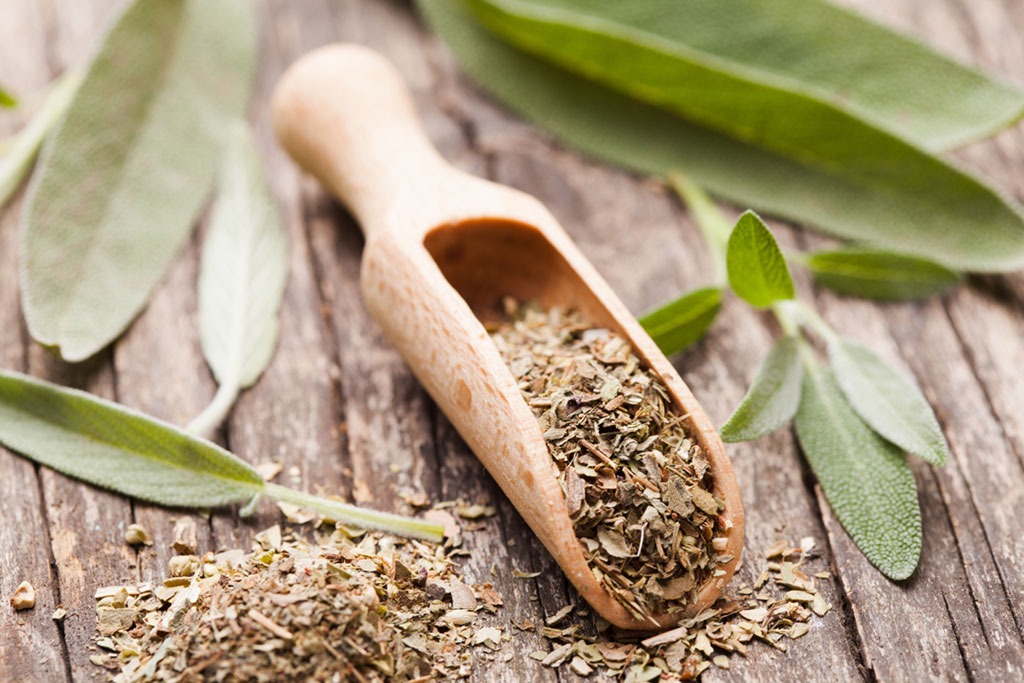
But for generations, herb-savvy women have been turning to the plant world for nontoxic, natural remedies for these common complaints. It’s time we revisited those simple cures, urges Rosemary Gladstar, founder of Sage Mountain Herb Center in Barre, Vt.. Given the high price of health care and the stresses of daily life, herbs are more relevant than ever, she says.
“Treating yourself with home remedies is the easiest, least invasive and oftentimes most effective treatment,” she says. You just need to know your cramp bark from your feverfew. Here’s how, compliments of an exclusive excerpt from the essential encyclopedia for all-natural cures, The Doctor’s Book of Natural Health Remedies available now.
Chaste Tree Berry
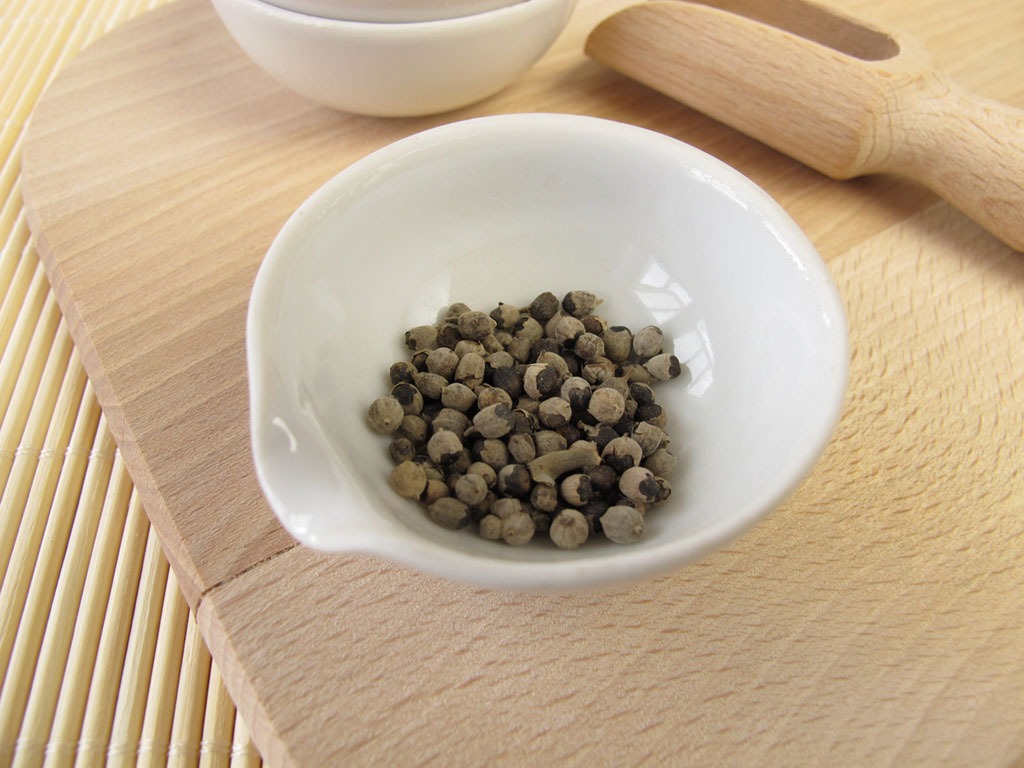
(Vitex agnus-castus)
BEST FOR: PMS
“There’s very good data to suggest chaste tree berry as a general remedy for PMS,” says Ellen Hughes, M.D., clinical professor of medicine at the University of California, San Francisco. A study of 170 women published in the British Medical Journal showed that 52% found relief from PMS-related irritability, mood changes and headaches by taking this herb.
Dosage: Hughes recommends one or two capsules of dried herb standardized to 0.6% acubin (the active ingredient). “Capsule is preferable,” she says, “because you’d have to drink about 24 ounces of tea a day—and it’s difficult to find a standardized tea preparation.” Alternately, you can take chaste tree berry as a tincture of 40 to 80 drops daily.
Precautions: Rarely, the herb can cause skin rash, and it should not be taken during pregnancy or while breast-feeding. Chaste tree berry may also interfere with drugs that inhibit the effect of dopamine in the brain, such as certain antidepressants. And for more immediate relief, click here for the 8 Best Foods That Ease PMS Fast!
Cramp Bark
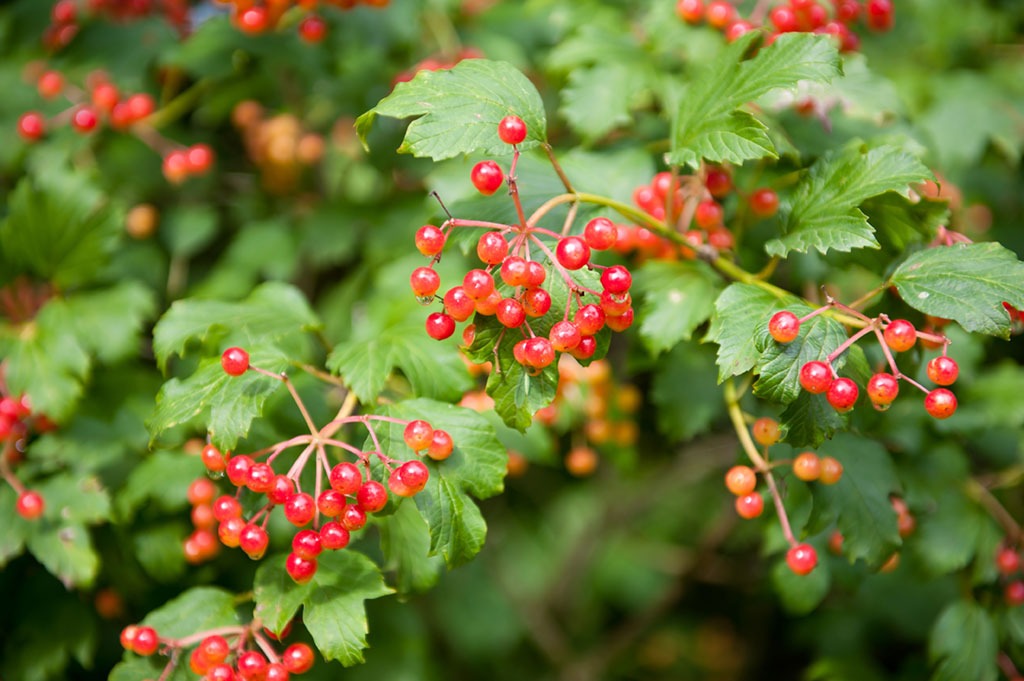
(Viburnum opulus)
BEST FOR: Menstrual cramps
This Native American herb is a safe and effective alternative to ibuprofen. Cramp bark is a uterine sedative that reduces inflammation, relaxes spasms and calms an overactive uterus so effectively it’s often used by midwives to halt premature labor. Research, including a 2008 study on herbal remedies for dysmenorrhea, has shown that cramp bark has an antispasmodic effect on smooth muscle fibers like those found in the uterus and large intestine, so it’s also useful as a muscle relaxant.
Dosage: Take one to two droppers of tincture in water every two hours as needed.
Cranberry
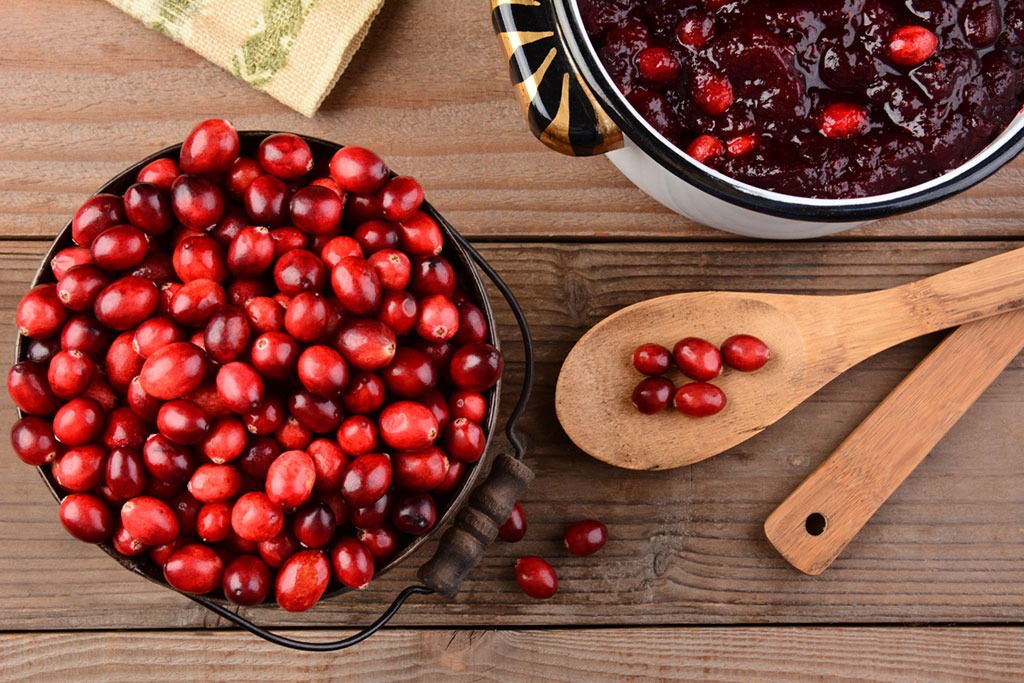
(Vaccinium macrocarpon)
BEST FOR: Prevention of UTIs
For reasons that aren’t well understood, women are more likely than men to develop a urinary tract infection (UTI). In fact, one in five women will get one in her lifetime, according to 2012 National Institute of Diabetes and Digestive and Kidney Diseases statistics. Some women are more prone to UTIs than others—diaphragm users, for instance, are at a high risk—and almost 20% of women who develop one will eventually develop another. Most infections arise from an overgrowth of E. coli bacteria in the urethra (urethritis) and/or bladder (cystitis). Cranberry prevents bacteria from adhering to the walls of either organ, making it difficult for infection to take hold. It will not, however, kill the bacteria once they’re established; in that case, only prescription antibiotics can provide relief.
Dosage: Lane P. Johnson, M.D., M.P.H. recommends drinking at least one eight-ounce glass of cranberry juice a day. Choose a high-quality juice with a large concentration of cranberry; Northland brand, for instance, contains up to 27% cranberry. Pure unsweetened cranberry juice is available in health food and vitamin stores, but it’s so tart that it’s hard to drink. The recommended dosage is 15 to 30 milliliters per day; you can dilute it in water to improve the flavor. “You can also take cranberry capsules,” says Johnson. “But studies show the effects aren’t as strong.”
Precautions: There are no known medical precautions to consider when drinking cranberry juice, but if you suffer from gastroesophageal reflux disease or a peptic ulcer, the acidity may aggravate your symptoms. And enjoy cranberries along with these essential Best-Ever Fruits for Weight Loss!
Black Cohosh
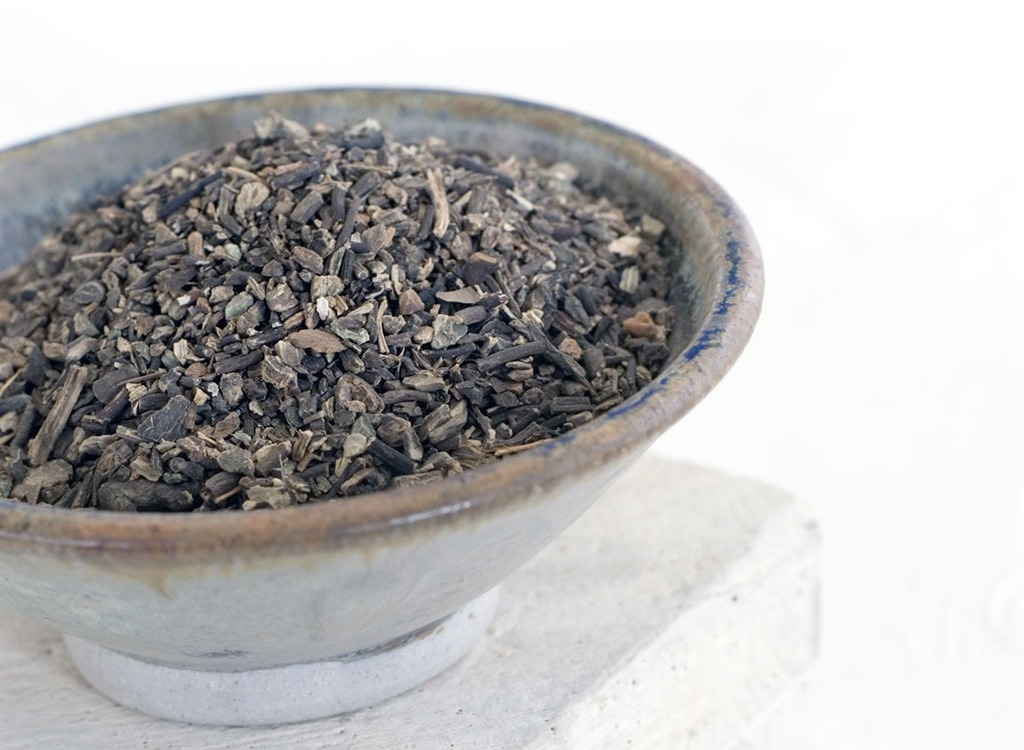
(Cimicifuga racemosa)
BEST FOR: Hot flashes and night sweats.
“This herb is one of the best-studied—and perhaps most popular—treatments for hot flashes,” says Tieraona Low Dog, M.D., author of a review of botanical supplements for menopause published in the American Journal of Medicine. A 2013 Mayo Clinic overview confirms the findings. In fact, most studies have found it to be effective in reducing the hot flashes and night sweats associated with menopause, according to the National Center for Complementary and Alternative Medicine (NCCAM), a division of the National Institutes of Health (NIH). Despite all the research, however, no one is quite sure how it works. One long-held theory asserted that black cohosh exerted a positive estrogenic effect. (Declining estrogen levels are principally responsible for menopausal symptoms.)
But newer data suggest that it may actually decrease levels of other hormones (including luteinizing hormone) that cause hot flashes, according to a research review published in the journal American Family Physician. Black cohosh isn’t effective at relieving other menopausal issues, such as vaginal dryness, however.
Dosage: The recommended dosage is 20 milligrams twice daily. It’s available as a fresh or dried root or in pill form; Johnson recommends the brand Remifemin, a standardized extract that has been used in more than 90 studies.
Precautions: “Anyone with any kind of liver disorder or on any type of hepatotoxic medication” should put the kibosh on black cohosh, cautions Johnson. It should not be taken during pregnancy or while breast-feeding.
Dong Quai
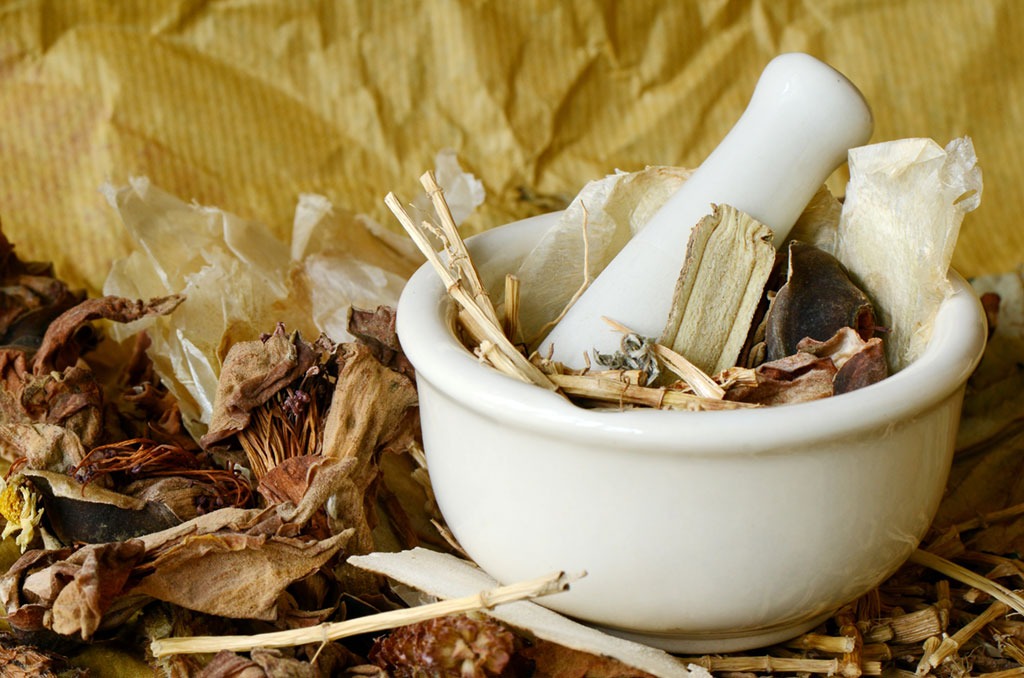
(Angelica sinensis)
BEST FOR: General female wellness
Also known as angelica root or dong quai, this Chinese herb is often called the “female ginseng” because of its usefulness in treating irregular periods, fatigue, and premenstrual irritability and anxiety, says Dana Price, D.O.M., L.Ac., DipI. OM. Scientists aren’t clear on how it works; dong quai may have a weak estrogenic effect, but this remains unconfirmed. In Traditional Chinese Medicine (TCM), dong quai is used in combination with other herbs to strengthen the blood of people with excess yin energy; females are generally more yin than yang, according to the ancient practice.
Dosage: TCM is highly individualized, so it’s best to consult an accredited specialist for a correct herbal prescription, explains Price.
Precautions: Avoid dong quai if you’re pregnant—it can stimulate uterine contractions, warns Price. “It may also cause diarrhea and/or abdominal distension,” she says. If you’re on a blood thinner such as warfarin, you shouldn’t use this herb. Dong quai can increase your sensitivity to sunlight, so be sure to wear sunscreen. Pair it along with these 10 More Superfoods Every Woman Needs to Feel Her Best!
Feverfew
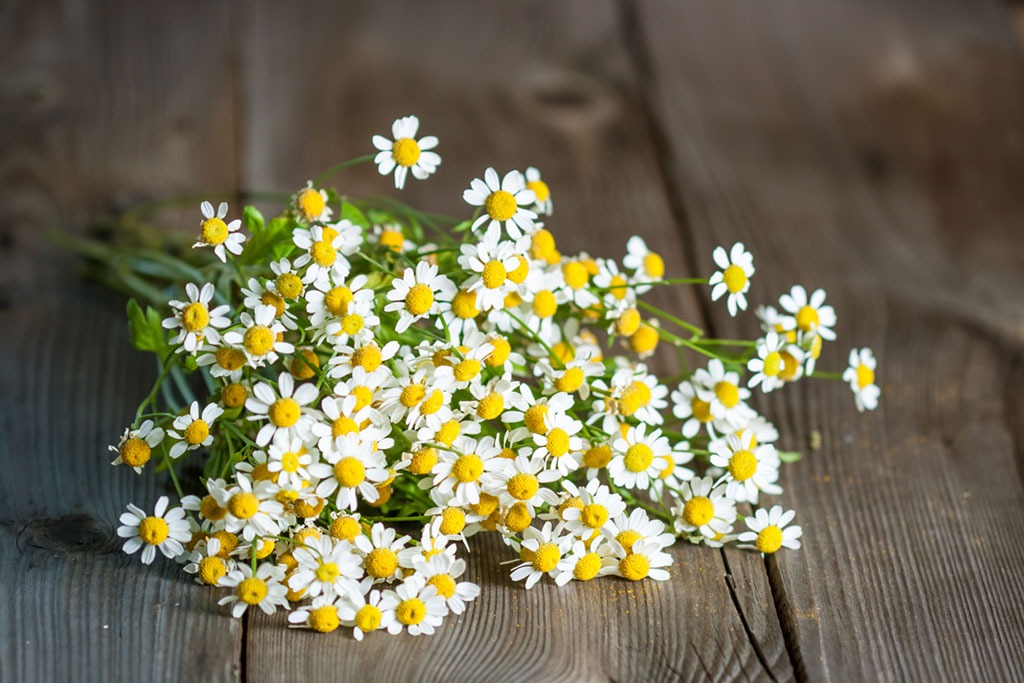
(Tanacetum parthenium)
BEST FOR: Migraines
Nearly three times as many women as men experience migraines, according to the National Headache Foundation, but men who were diagnosed with headache were most often diagnosed with migraine headaches (36%). An estimated 7.5 million men in the United States suffer from migraines. Feverfew may help relieve the nausea and vomiting associated with these debilitating headaches and/or reduce the need for traditional prophylactic pharmaceuticals, according to Mark Blumenthal, executive director of the American Botanical Council in Austin, Texas.
Dosage: Blumenthal recommends 100 to 150 milligrams of dried leaves or 2 ½ fresh leaves daily (with food or after eating).
Precautions: Blumenthal recommends that pregnant women and anyone taking a blood thinner steer clear of feverfew. If you’re allergic to ragweed (a member of the feverfew family), marigolds or chrysanthemums, it’s also wise to stay away. (In the German study, some subjects reported mouth ulcerations as a side effect.) Feverfew may also increase the risk of sun sensitivity caused by prescription medications like Retin-A.
Ginger
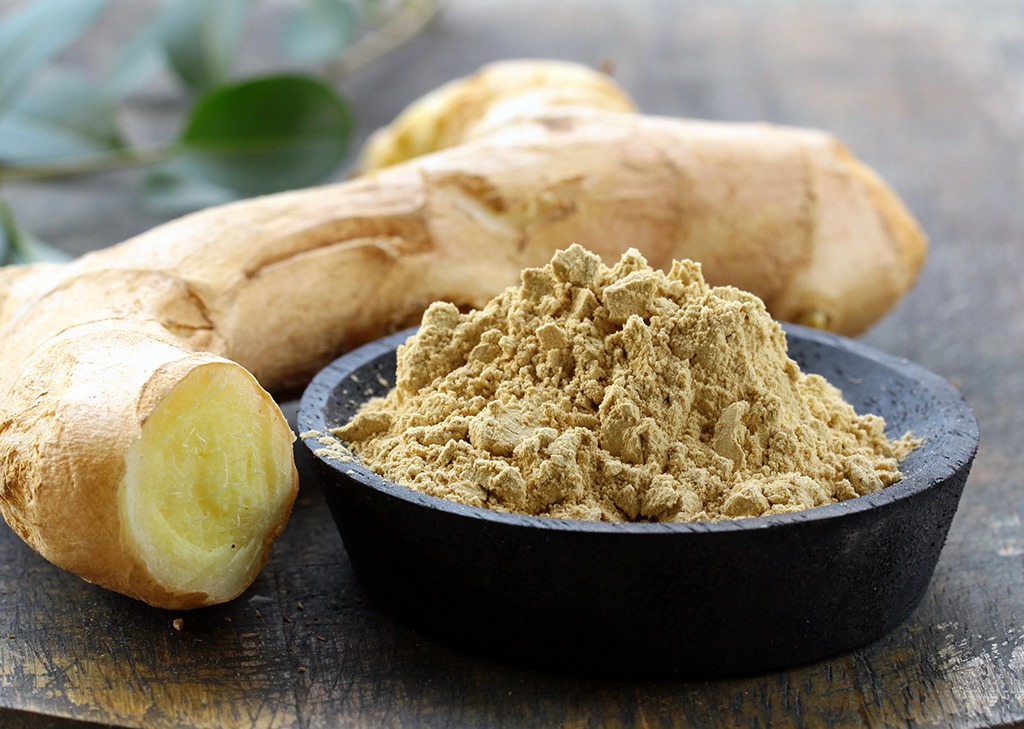
(Zingiber officinale)
BEST FOR: Nausea
Whether your queasy stomach is caused by PMS, pregnancy-related morning sickness or an upcoming visit from the in-laws, ginger can most likely help. A review of six double-blind randomized controlled clinical trials published in the journal Obstetrics & Gynecology concluded that ginger was an effective treatment for nausea and vomiting during pregnancy. Studies from 2009 to 2012 showed great success combating the nausea from chemotherapy.
Dosage: Integrative physician and herbalist Tieraona Low Dog, M.D. recommends taking dried ginger for the best effects. “Stick with 250 milligrams, four times a day.” Cooking with the herb may also be helpful. ever
Precautions: Few side effects are linked to normal ginger consumption, but powdered ginger may produce bloating or indigestion. Ginger may also exacerbate heartburn in pregnant women. And do you feel bloated all the time? Click here for Best Foods to Eat to Never Feel Bloated Again!
Nettle
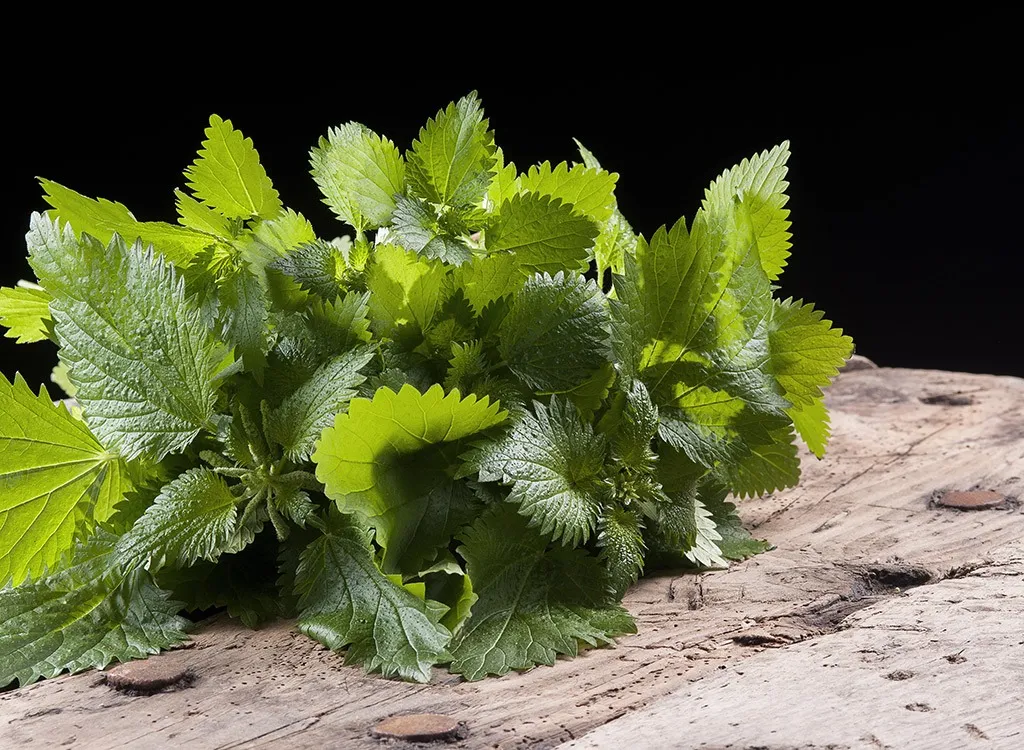
(Urtica dioica)
BEST FOR: Anemia and breast milk production
Nettle tea is a rich plant-based source of iron, chlorophyll and folic acid; a 2013 study found its analgesic properties can benefit anemia as well as seasonal allergies and UTIs (also enlarged prostate—just covering our bases). It also contains vitamin K, which helps blood clot, so it’s great if you tend to get a little anemic because of heavy periods. Also a detoxifying herb that increases urine production, and may be useful for skin conditions.
Dosage: Make a tea of one tablespoon dried nettle herb steeped in a cup of hot water for at least 30 minutes (or overnight); drink warm, three cups a day.
Green Tea
(Camellia sinensis)
BEST FOR: Weight loss and cancer prevention—watch the video to learn more!
Sales of green tea have exploded by 60 percent in just the last 10 years, primarily because of millennials, according to a new report by the Tea Association of the U.S.A. In fact, tea sales totaled $1.8 billion in 1990; by 2020 they will reach $47 billion. And what’s good for Bigelow’s budget is good for your abs, as well. Because green tea may be the most potent fat-burning weapon known to man—all for just 11 cents a cup.
Taiwanese researchers studied more than 1,100 people over an 10-year period and found that those who drank green tea had nearly 20 percent less body fat than those who drank none.
Plus, a growing body of research suggests drinking this Asian staple may help ward off cancer. According to an American Cancer Society 2012 overview, many lab studies in cell cultures and animals have shown that green tea has chemopreventive properties. Two meta-analyses, one published in the journal Carcinogenesis and the other published in Integrated Cancer Therapies, found that green tea consumption may prevent the growth of lung cancer and breast cancer tumors, especially in the early stages. Do not replace any therapy that’s working, with green tea.
Dosage: Drink 6 to 10 cups of organic green tea a day, suggests Christine Horner, M.D., author of Waking the Warrior Goddess. Also, choose caffeinated, unless you are pregnant or must otherwise limit your intake of caffeine. (A cup of green tea contains 20 milligrams, about a quarter of the amount in coffee.) “Some research has found that removing the caffeine reduces the chemoprotective potential,” says Horner.
To learn more about the wonders of tea, and get started on a 7-day plan that will melt up to 10 pounds, buy the 7-Day Flat-Belly Tea Cleanse now—test panelists lost 10 pounds in one week! Available at Amazon, iBooks, Nook, Google Play, and Kobo.
#
Sage
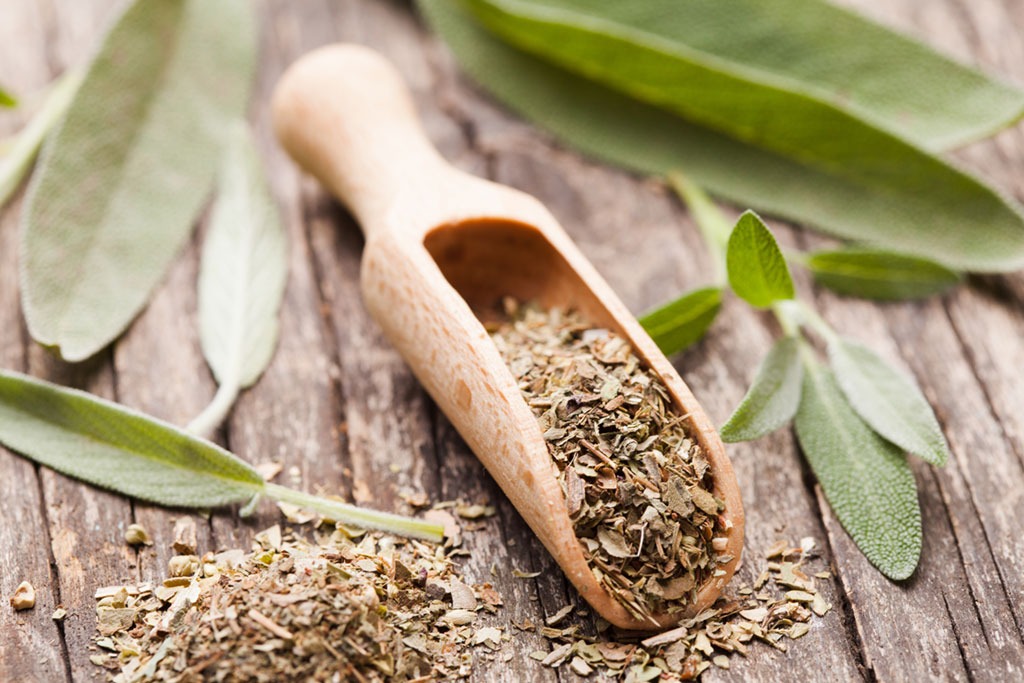
(Salvia officinalis)
BEST FOR: Hot flashes
“Sage has been passed down from generation to generation in Western herbal tradition as the sure-fire cure for hot flashes,” explains Sheila Kingsbury, N.D., chair of the Botanical Medicine Department at Bastyr University. It’s such an effective astringent that it’s been approved in Germany as a treatment for excessive sweating for both men and women. “Sage was also used in Native American cultures to clear negative energy so it may help ease some of the irrational fears that can cycle through your head during menopause,” says herbalist Margi Flint, author of The Practicing Herbalist.
Dosage: Make a tea of one tablespoon dried sage steeped in one cup hot water for 15 minutes or more; strain and cool. Drink up to three cups a day. If you don’t like the taste, put the tea in a spray bottle (after it has cooled completely) and spritz it on your neck.
Precautions: Avoid therapeutic doses of sage during pregnancy, or if epileptic.
Cinnamon
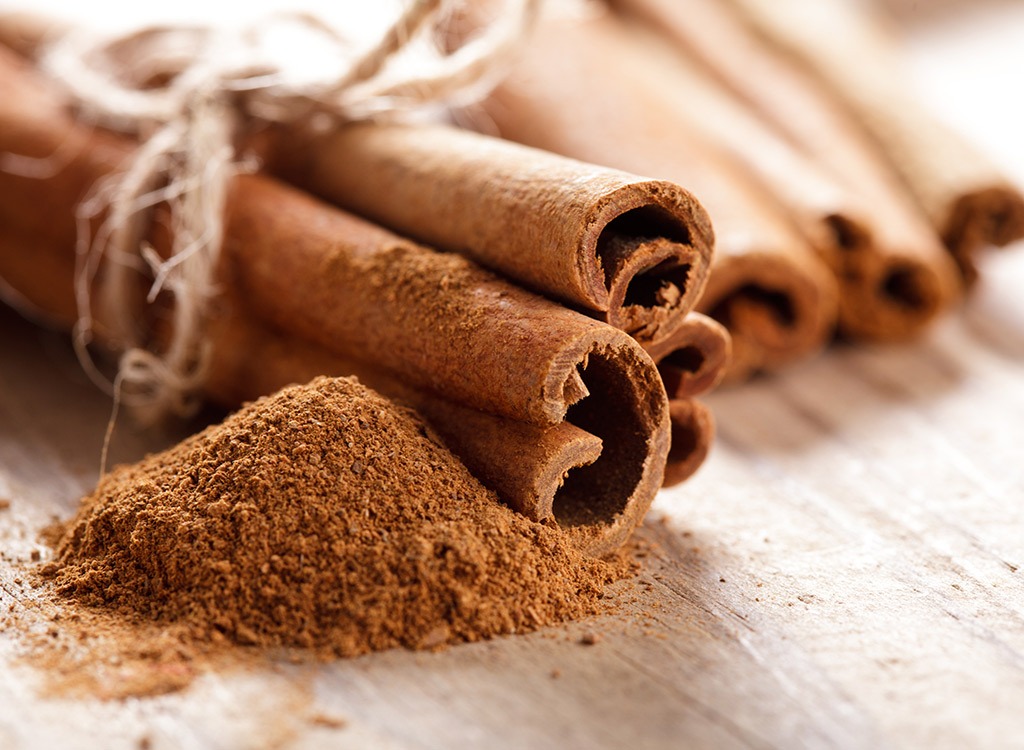
BEST FOR: Colds and digestive issues, and weight loss
Beyond its traditional use as a spice, cinnamon has a long history in ayurvedic medicine. It’s warming, so it’s good for colds, congestion, and high cholesterol. Cinnamon is a traditional remedy for digestive problems like nausea and diarrhea. Recent research has confirmed cinnamon’s antibacterial and antifungal qualities; and it has been shown to kill salmonella, a type of bacteria that causes food poisoning. A 2012 Mayo Clinic review concluded that the use of cinnamon had a potentially beneficial effect on glycemic control. One study published in 2009 found that a 500-milligram capsule of cinnamon taken twice a day for 90 days improved hemoglobin A1C levels.
Dosage: 0.5 to 1 gram of powdered bark in tea three times a day; in liquid extract, 0.5 mL three times daily. This tasty spice is easily added to many foods, not just toast, oatmeal and cookies.
Precautions: There are no significant side effects, but remember that diabetics should be under the care of a specialist, and cinnamon should be used only to complement other treatments.
Yarrow
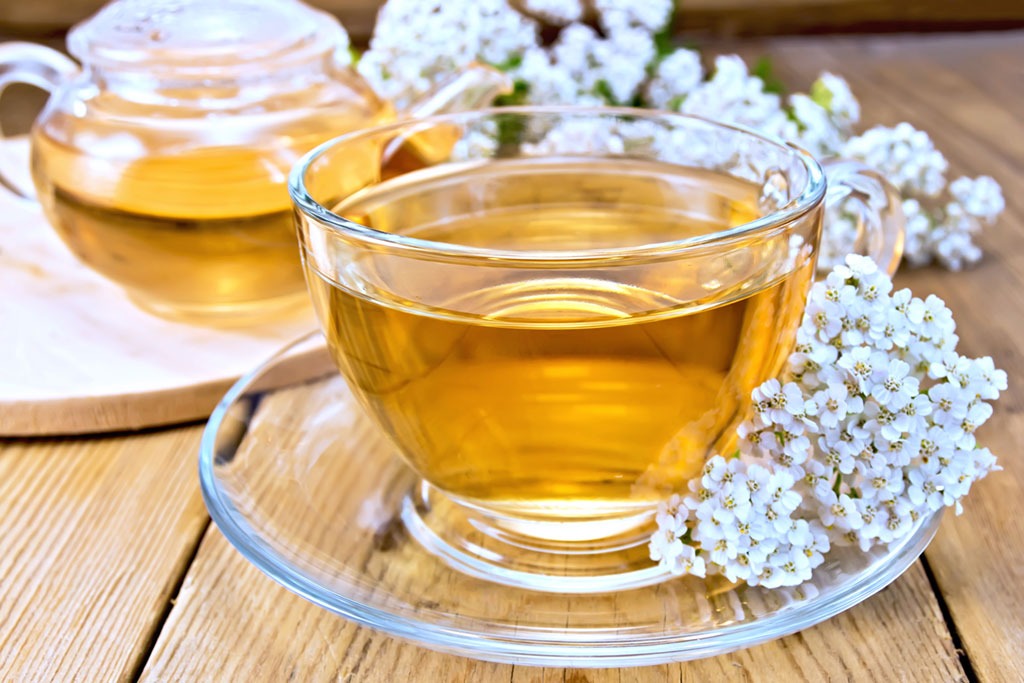
(Achillea millefolium)
BEST FOR: Heavy periods
Yarrow is the go-to herb for heavy menstrual bleeding, says Gladstar. “It slows excessive bleeding, relieves pelvic congestion, reduces cramping and flushes out the liver so estrogen and progesterone are processed more efficiently,” she says. A 2013 University of Maryland Medical Center report says it may work by relaxing the smooth muscle in the uterus; also eases menstrual cramps.
Dosage: Take two droppers of tincture every half hour until bleeding slows.
Precautions: Do not use during pregnancy. Rarely, may cause allergic reaction. Use essential oil internally only under professional supervision.
Licorice
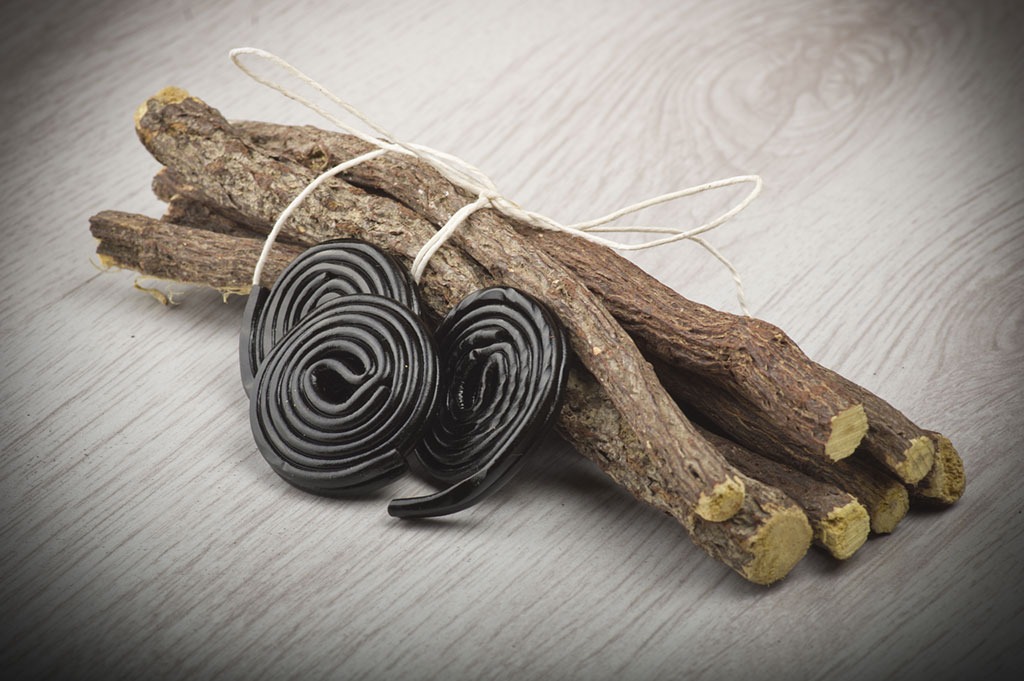
(Glycyrrhiza glabra)
BEST FOR: Inflammation
Licorice is the most widely used Chinese herb. Dubbed “the great harmonizer,” it moderates the effects of harsh herbs and sweetens the taste of bitter ones. It’s known as a safe, gentle and effective remedy for inflammation like sore throats, allergies, food poisoning, stings and muscle-spasm pain. Licorice also helps treat ulcers and, according to a study at the University of Texas, stimulates the immune system.
Dosage: 1 to 4 grams powdered root three times a day; 1 teaspoon chopped licorice root added to hot water to soothe a sore throat.
Precautions: Look for DGL or deglycyrrhizinated licorice. At high doses, licorice may cause laxative effects, fluid retention, and hypertension. Those with heart disease or hormone-sensitive cancers shouldn’t take licorice as an herbal treatment. Eating it is fine.
Red Wine

BEST FOR: Weight loss and sex drive
If you’re looking for a way to simultaneously boost your libido and calm those pre-date jitters, pour yourself a glass of red. Women who drank one to two glasses had heightened sexual desire compared to ladies who didn’t down any vino, a Journal of Sexual Medicine study found. (Just be sure to cut yourself off after your second glass; enjoying more than that didn’t stimulate any further arousal, and knocking back too much can stop the show before it starts.) What makes the elixir so beneficial is a rich antioxidant profile that triggers nitric oxide production in the blood, which relaxes artery walls. As with many of the foods on this list, that increases blood flow down south.
When to Enjoy It: Wine shouldn’t be taken medicinally, despite what rom-coms tell you. Talk to your doctor about how best to integrate it into your diet. And feel sexier and slimmer than ever by sipping any of these delicious, affordable and perfect-for-date-night 16 Best-Ever Wines for Weight Loss!
Goldenseal
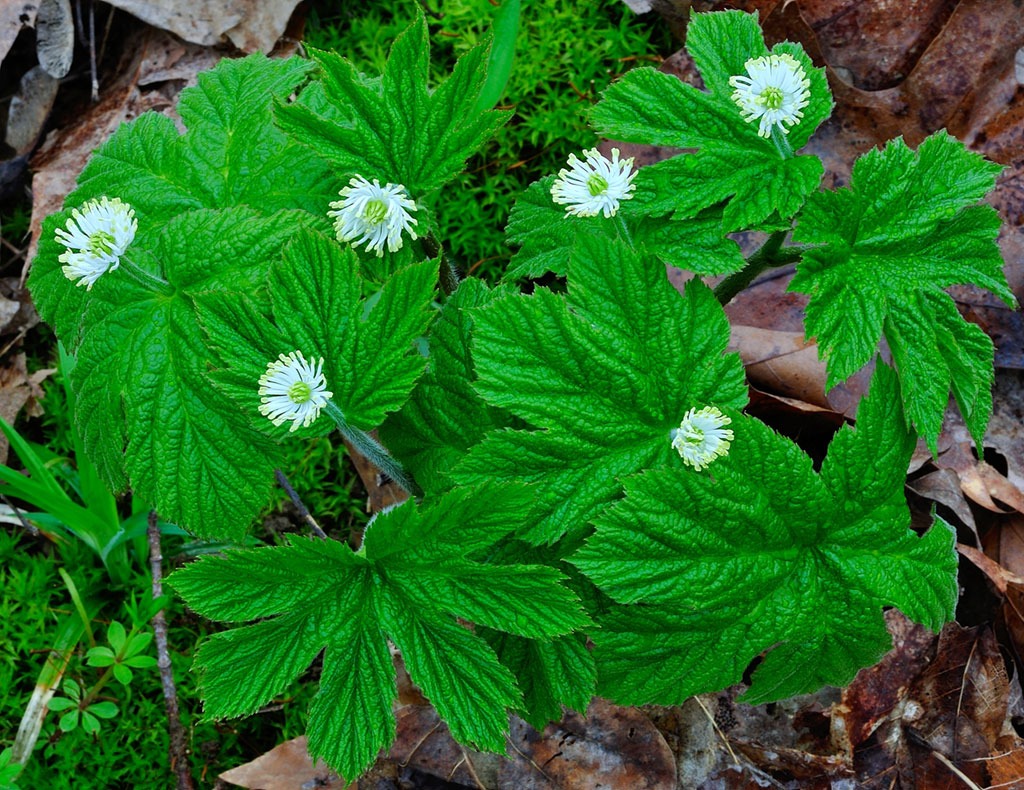
(Hydrastis canadensis)
BEST FOR: Digestive-tract infections
Goldenseal, an herbal antibiotic, is often marketed in combination with echinacea as a treatment for infections, but it is effective only in the digestive tract, not for colds or flu. A 2012 University of Maryland study reported in Clinical Advisor found that goldenseal is an effective antibacterial agent and an aid to digestion. For gastrointestinal infections (e.g., ulcers, food poisoning, infectious diarrhea), ask your doctor about using goldenseal in addition to medical therapies. Also can be used topically for wounds and infections.
Dosage: For internal use, take a 300-milligram capsule three times a day; apply a dilution as needed for external use.
Precautions: Can be toxic if taken to excess. May interact with antidepressants and codeine. Do not use if pregnant, nursing or suffering from high blood pressure.
St. John’s Wort
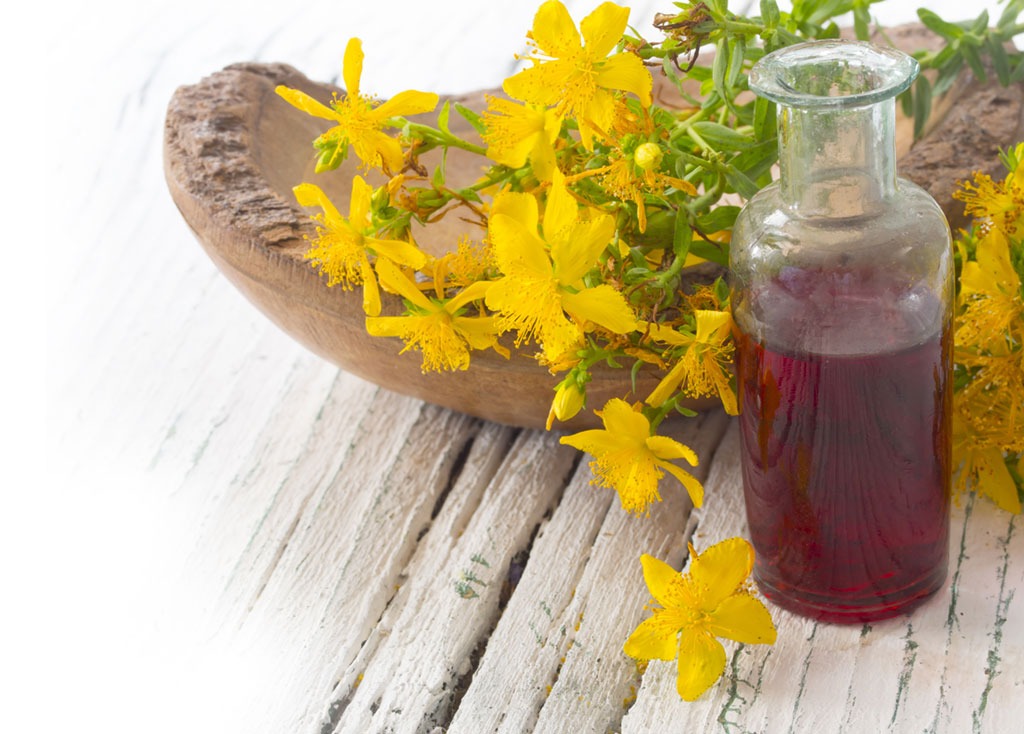
(Hypericum perforatum)
BEST FOR: Depression and pain
“Long before it was ever used for depression or anxiety, St. John’s wort was used as a pain reliever and an anti-inflammatory for muscle pains, burns and bruises,” explains Gladstar, adding that blending the oil with the alcohol-based tincture helps draw the active constituents into the skin for faster healing. For mild depression, St. John’s wort often works as well as some antidepressants, but with fewer side effects. “We recently concluded a comprehensive review of the scientific literature on St. John’s wort, and 21 of 23 studies support it for mild to moderate depression,” says Blumenthal. It’s not clear if St. John’s wort is as effective as selective serotonin reuptake inhibitors (SSRIs) such as Prozac or Zoloft, but a 2013 Mayo Clinic overview states that scientific evidence supports its use for mild to moderate depression; for severe depression, the evidence remains unclear.
Dosage: For depression, studies showing benefits have used 600 to 1,800 milligrams a day; most have used 900 milligrams a day. For pain, make a liniment by mixing equal parts St. John’s wort tincture and St. John’s wort oil. (Most concoctions come in 2-ounce bottles.) Mix vigorously before using, apply topically to affected area (avoiding the eyes), and massage into skin as needed.
Precautions: Stomach upset is possible, and St. John’s wort interacts with many drugs, including possibly reducing the effectiveness of birth control pills; so seek professional advice if you are taking a prescription medication. Depression requires professional care; ask your physician about St. John’s wort and Free Yourself From Depression with These Natural Cures!
Mustard Greens
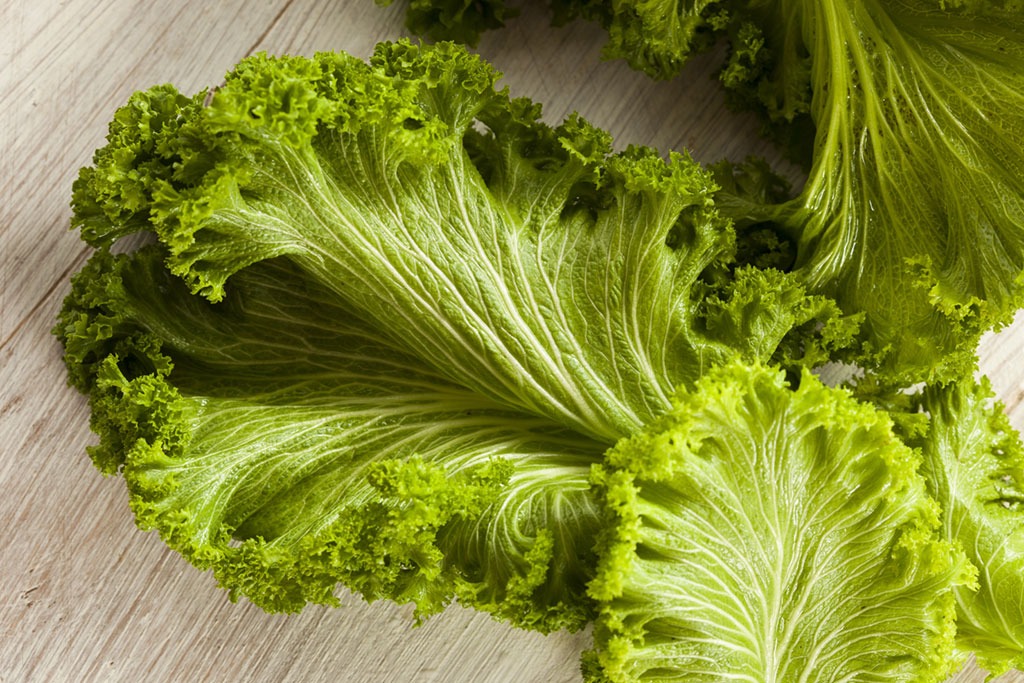
BEST FOR: A healthier heart, lungs and bones
This peppery plant is jampacked with vitamins K, A and C, a triple threat of antioxidants that battle the effects of aging and disease. Heart-healthy nutrients like folate, fiber, potassium and beta-carotene also protect the heart and lungs, while calcium builds stronger teeth and bones. “By providing us with a diverse array of antioxidants, mustard greens help protect our bodies from damaging free radicals,” says Christine Avanti, C.N., holistic nutritionist in Los Angeles and author of Skinny Chicks Don’t Eat Salads.
Dosage: Raw or cooked, the pungent green works as a side or combined with a casserole or stir-fry. Two cups = 120 milligrams of calcium, so try to eat them a few days a week.
Oatmeal
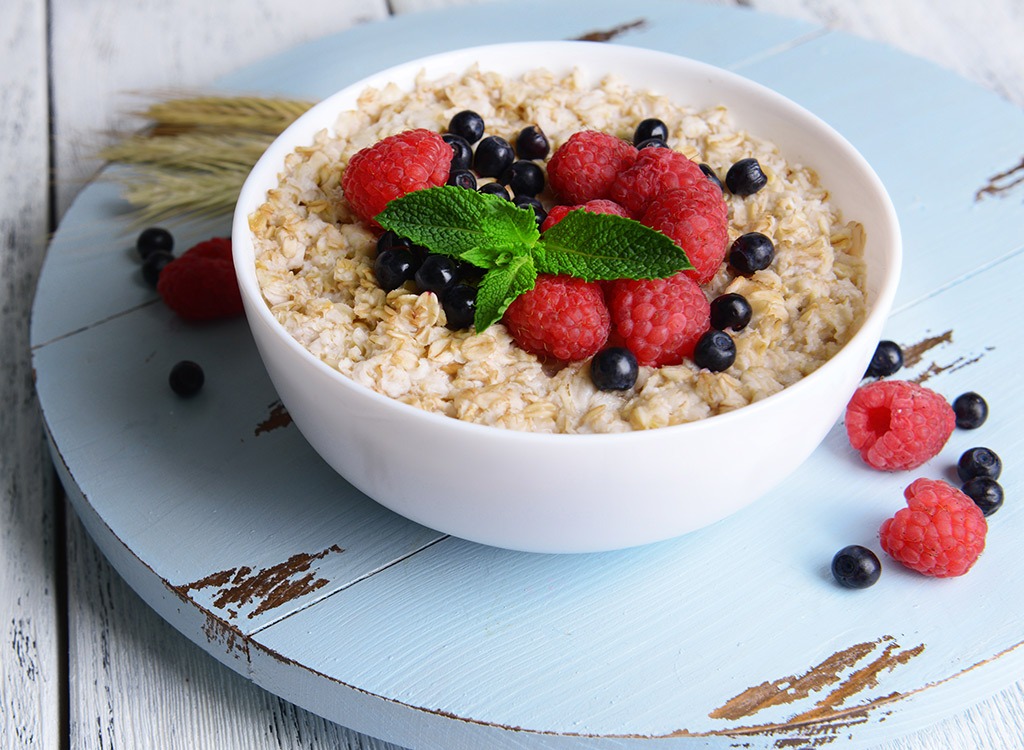
BEST FOR: Weight loss, cholesterol and lowering the risk of heart disease and type 2 diabetes
High cholesterol is a life-threatening condition that develops when fat builds up in the blood vessels. Left untreated it can lead to heart attack and stroke. Luckily, it’s not too difficult to combat. Simply eating a healthy diet that includes soluble fiber-rich whole grains—like oatmeal—can help. Oatmeal can also protect you from heart disease. A Harvard study of more than 68,000 women found that those who ate the most fiber daily were 23 percent less likely to develop heart disease than were those who consumed the least. Thanks to the breakfast staple’s high fiber content, it can also slash the odds of developing type 2 diabetes by a whopping 61 percent! The superstar nutrient also helps stabilize blood sugar, which wards off diet-derailing hunger and dangerous dips in glucose. In other words, eating oatmeal can actually help keep you trim and healthy.
Dosage: Eat up to one cup daily of the unsweetened steel-cut variety. Typically in a rush in the morning? Whip up one of these 14 Overnight Oat Recipes for Weight Loss.
Fatty Fish
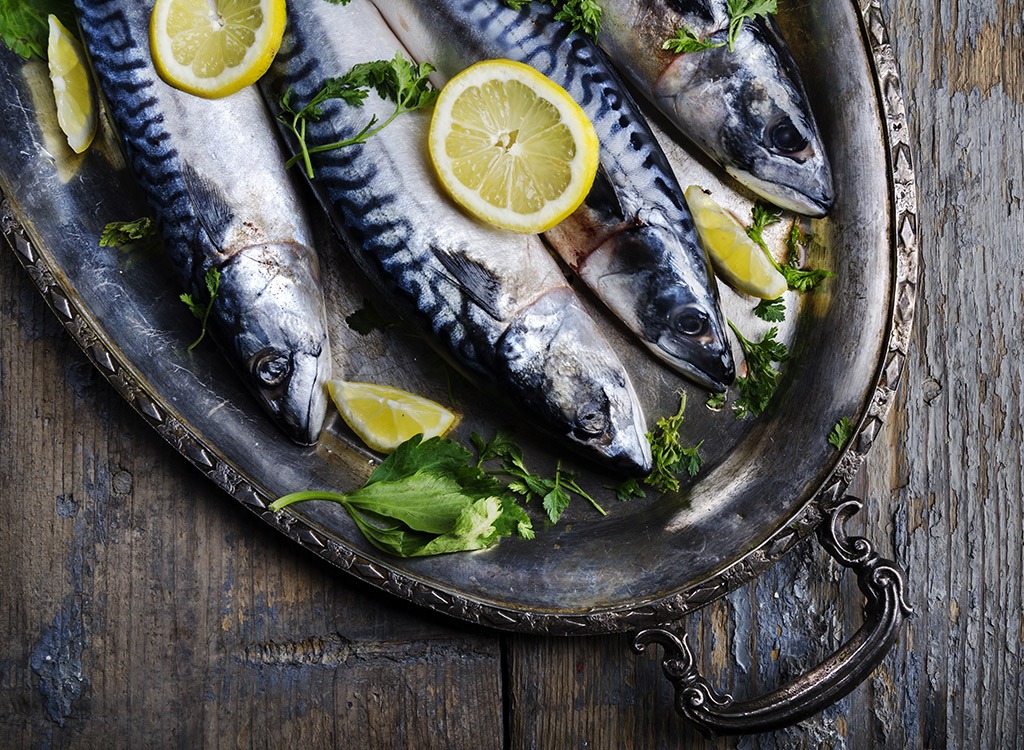
BEST FOR: Weight loss, arthritis and heart disease
Fatty fish like mackerel, herring and wild salmon owe their super health-promoting powers to their high omega-3s and vitamin D content. In fact, it’s those very nutrients that help fatty fish aid weight loss efforts. The vitamin D keeps hunger and cravings in check while the omega-3s slow the rate of digestion, which boosts feelings of satiety and crushes appetite, helping you eat fewer calories throughout the day. Regularly consuming fatty fish can also decrease your odds of dying from heart disease by more than 33 percent! What’s more, the powerful fatty acids can keep inflammation at bay and, in turn, help lower the risk of arthritis, a condition commonly associated with pain and stiffness.
Dosage: Eat fatty fish at least two times a week to ensure a steady supply of its protective nutrients. A cooked serving is considered to be 3.5 ounces, while a serving of flaked fish is about ¾ cup.
Precautions: Make sure you’re ordering the right fish. Click here to discover the shocking reason Why Tilapia is Worse Than Bacon!
Spinach or Grass-Fed Meat
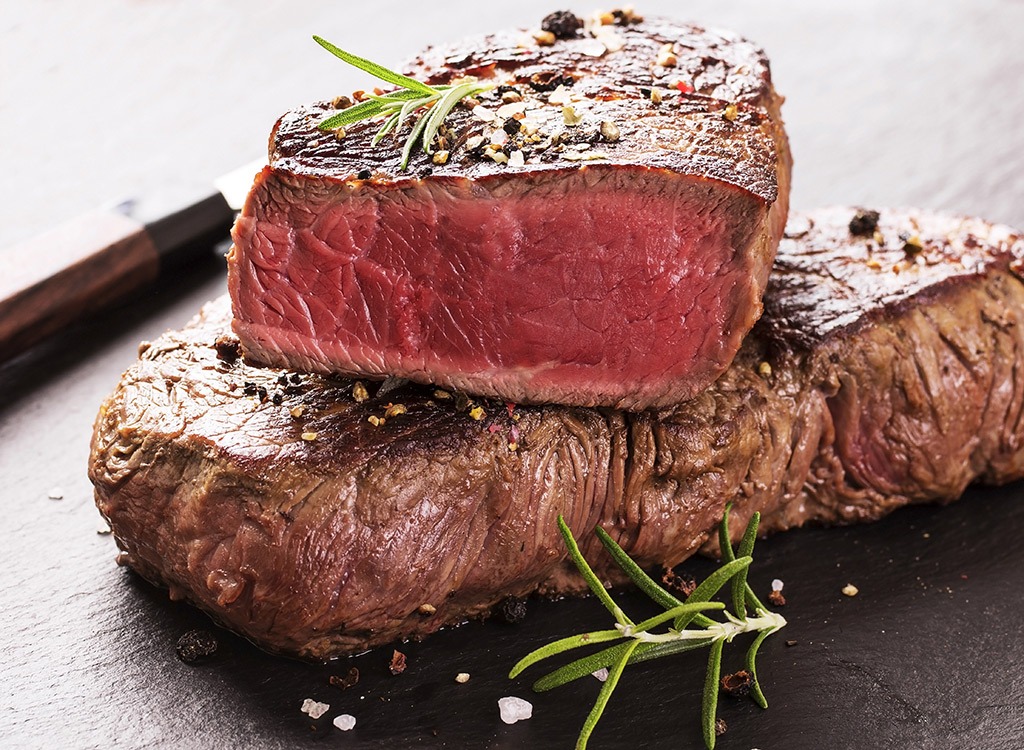
BEST FOR: Sex drive
If your crazy-busy schedule is to blame for your lack of libido, you’re not alone. “One of the primary reasons couples stop having sex is because they’re tired, fatigued and stressed. But sometimes, there’s a biological component at play,” says psychotherapist and sex expert Tammy Nelson Ph.D. One of the causes of fatigue in women is iron deficiency. The condition can sap energy, which may result in a low sex drive, she says. Cassie Bjork, RD, LD, concurs, adding, “Iron deficiency is common and can result in feelings of exhaustion, weakness and irritability, which doesn’t make anyone feel like getting intimate.”
How much you need: Bjork says remedying the situation requires a two-part approach: “If you think your diet lacks iron, focus on eating more spinach, grass-fed red meat and liver, all foods rich in the nutrient. Then, ensure sure your body is able to utilize the iron,” she says. “Consuming probiotic-rich yogurt, fatty fish and an L-glutamine supplement can improve gut health and help your body to absorb iron more efficiently,” explains Bjork. And to always feel confident in bed, eat these 8 Foods for Your Sex Drive Better Than Female Viagra!
